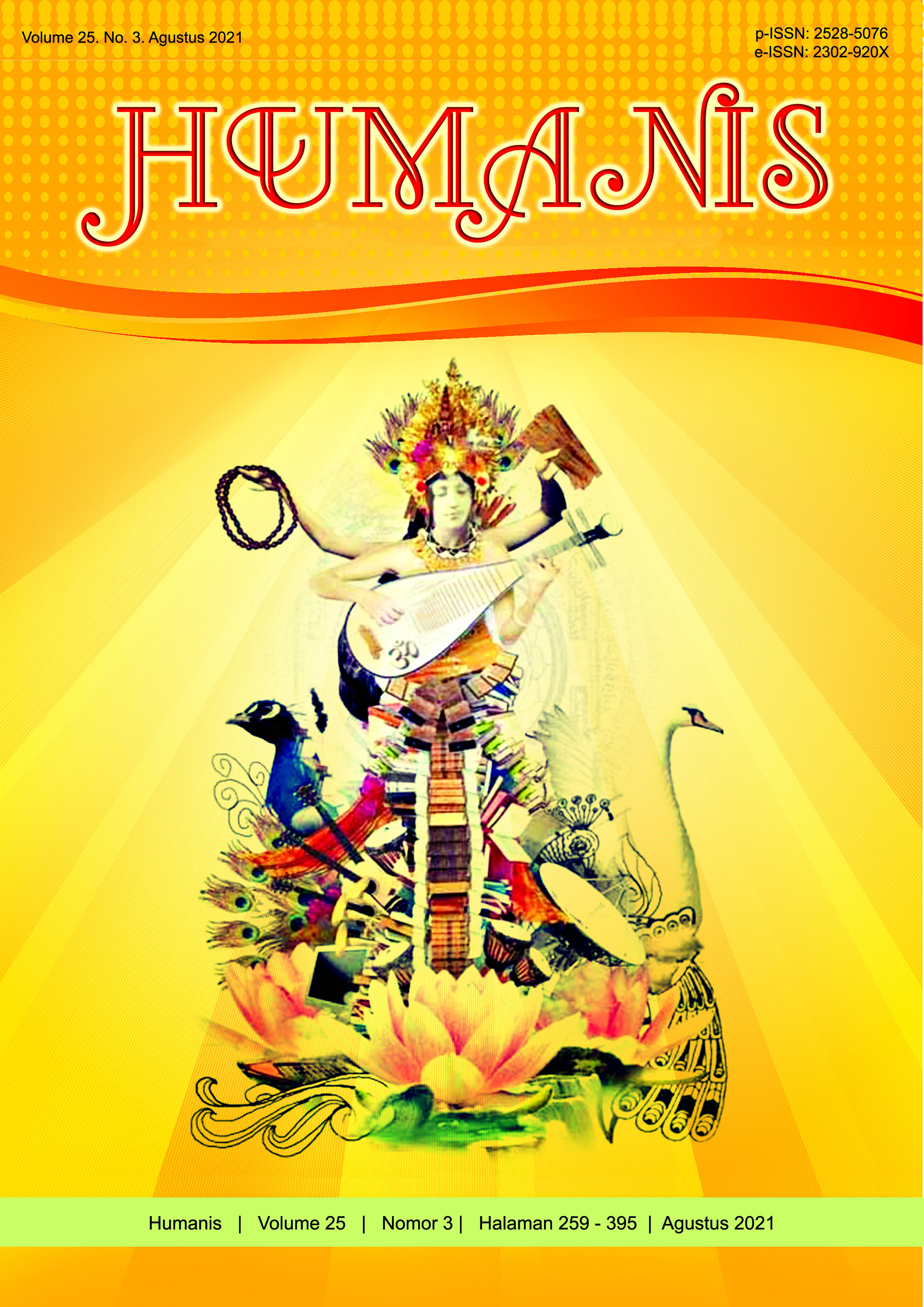Masyarakat 5.0 dalam Film AI Ho?kai karya Irie Yu
Abstract
This study aiming to analyze society 5.0, challenges and obstacles to realize society 5.0, and society 5.0 contribution to SDGs. The data was collected by using the documentation method and note-taking technique from the movie AI Houkai by Irie Yu. The data was analyzed descriptive qualitatively based on the theory of society 5.0 by Nakanishi, literature anthropology by Ratna, semiotics by Eco and the theory of Young about SDGs theory. The finding shows that society 5.0 characterized as “Creative Society”of rapidly advancing innovation in digital technologies such as AI, the Internet of Things, robotics, and Augmented Reality. All people can share common goals. But, challenges and obstacles to realize such development time, permission from the government, and refusal from Japanese. Society 5.0 will contribute to delivering on SDGs.
Downloads
References
Carraz, René & Harayama, Y. (2016). Japan’s Innovation Systems at the Crossroads: Society 5.0, Panorama: Insight into Asian and European Affairs, hlm. 33-45.
Deguchi, Atsushi. (2020). From Smart City to Society 5.0. In: The University of Tokyo (eds) Society 5.0; A People-centric Super smart Society, hlm. 43-65. Springer, Singapore.
Deguchi, Atsushi & Kaori Karasawa. (2020). Issues and Outlook. In: The University of Tokyo (eds) Society 5.0; A People-centric Super smart Society, hlm. 155-173. Springer, Singapore.
Dirken, Nicole & Takahashi, S. (2020). Artificial Intelligence in Japan 2020. Netherlands: Netherlands Enterprise Agency.
Eco, Umberto. (1923). Teori Semiotika. Yogyakarta; Kreasi Wacana.
Hitachi. (2020). Hitachi’s Approach for Society 5.0, Hitachi: (Diakses pada 11 April 2021 dari alamat https://www.hitachi.co.jp/products/social/society5/en/)
Karimi, Kaivan & Atkinson, G. (2013).What the Internet of Things (IoT) Needs to Become a Reality. White Paper, FreeScale and ARM. hlm. 1-16.
Mise, Toshiro. (2018). Chō sumāto shakai no tame no shisutemu kaihatsu. Tokyo: Forum 8.
MoFA Japan. (2016). The SDGs Implementation Guiding Principles. The 2nd meeting of the SDGs Promotion Headquarters, Public Relations Office, the Government of Japan.
Nakanishi, Hiroaki & Kitano, H. (2017). Society 5.0: Co-Creating the Future. (Diakses pada 11 April 2020 dari alamat https://www.keidanren.or.jp/en/policy/2018/095_booklet.pdf)
Nakanishi, Hiroaki., Gonokami, Makoto., Takahashi, Norihiro. (2020). ESG no shinka, Society 5. 0 no jitsugen, soshite SDGS no tassei e. Tokyo: Keidanren.
Ratna, I Nyoman Kutha. (2011). Antropologi Sastra: Peranan Unsur-Unsur Kebudayaan dalam Proses Kreatif. Yogyakarta: Pustaka Pelajar.
UN Women. (2019). A new MOU to propel gender equality across Japan, Asia and the Pasific: (Diakses pada 26 Mei 2021 dari alamat https://asiapacific.unwomen.org/en/news-and-events/stories/2019/10/mou-unw-jcijapan)
Yamanaka et al. (2021). Beyond 5 G jidai no nettowākubijon - 2030-nen ni muketa ākitekucha to burēkusurū gijutsu no chōkan. Denshi jōhō tsūshin gakkai ronbunshi B. 104 (3), hlm. 315 - 336.
Záklasník, M., & Putnová, A. (2019). Digital society – Opportunity or threat? Case studies of Japan and the Czech Republic, Acta Universitatis Agriculturae et Silviculturae Mendelianae Brunensis. 67(4), hlm. 1085-1095.


















